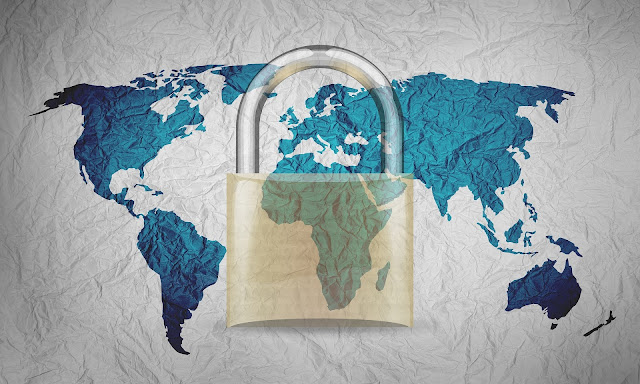REPOST: What is Disinformation?
This is a revised repost from our widely read blog, focusing on the growing threat of disinformation. We break down what it is, the forms it takes, and the strategic goals behind its use.
We highlight how assertive powers like Russia and China deploy disinformation as a cheap, effective weapon in hybrid warfare—undermining Western societies from within.
WHAT IS THE DEFINITION OF DISINFORMATION?
Disinformation is false or misleading information spread deliberately to deceive. Unlike misinformation—which is shared unintentionally—disinformation is crafted to manipulate public opinion, sow discord, or undermine trust in institutions, often as part of hybrid warfare.
It spreads through social media platforms like Facebook, Instagram, and X, as well as traditional media. Tactics range from fake articles and doctored images to misleading statements by public figures. During elections, for instance, disinformation may target candidates with false allegations. Globally, it can distort narratives around conflicts, fueling confusion and tension.
The effects are serious—eroding trust, deepening divisions, and sometimes inciting violence. From COVID-19 to the war in Ukraine, recent events show how quickly disinformation can spread and how persuasive it can be, especially when it plays on emotions and confirmation bias.
DISINFORMATION AS PART OF HYBRID WARFARE TACTICS
Disinformation plays a central role in modern hybrid warfare—used to destabilize, manipulate, and shape global perceptions without direct conflict. Hybrid tactics blend conventional military force with tools like cyber attacks, economic pressure, and disinformation to exploit societal fractures and weaken adversaries from within.
SOVIET ROOTS
Modern disinformation tactics have deep roots in Soviet-era strategy. During the Cold War, the USSR used propaganda and covert operations to shape global opinion and destabilize Western democracies—often through false narratives pushed via state media.
A notorious example is the 1980s "Operation INFEKTION," which claimed the U.S. created HIV/AIDS as a biological weapon. This lie spread through newspapers and fake journals, stoking anti-American sentiment and exploiting global tensions.
Today’s disinformation campaigns build on these Soviet-era tactics, adapting them to the digital age but following the same core playbook: exploit divisions, fuel distrust, and manipulate perception.
HOW IS IT USED IN UKRAINE
Many now call it what it is: war. Russia’s use of the term “special military operation” was a deliberate attempt to sidestep international obligations like the Geneva Conventions and to downplay the conflict's severity to its own citizens.
Disinformation has been central to Russia’s strategy—not just on the battlefield, but in shaping perception. Kremlin-backed campaigns have aimed to delegitimize Ukraine globally and destabilize it internally by fueling mistrust in institutions, stoking ethnic and political divides, and spreading conspiracy theories. One ongoing claim falsely asserts that President Zelenskyy is illegitimate because his term ended in May 2024, ignoring that Ukrainian law prohibits elections during martial law.
In response, Ukraine and its allies have ramped up counter-disinformation efforts—from fact-checking and media literacy programs to diplomatic campaigns that expose Russia’s tactics. The conflict highlights the far-reaching impact of disinformation on global security, democratic resilience, and information integrity.
HOW IS IT USED AGAINST THE WEST
Countries like Russia and China use disinformation as a strategic weapon against the West—blending traditional propaganda with modern technology to pursue geopolitical goals and undermine democratic institutions.
State-controlled media and social platforms are central to these campaigns. Russia spreads conspiracy theories, amplifies polarizing issues, and backs extremist voices to destabilize democracies. Its infamous troll factories played a key role in the 2016 U.S. election, sowing confusion and mistrust. China, meanwhile, runs coordinated efforts to shape global opinion on issues like human rights, territorial disputes, and sanctions, often using fake accounts and bots to amplify its narratives.
Both nations also conduct cyber operations to steal data, manipulate content, and push falsehoods. Crucially, they exploit the openness of Western media ecosystems—using the very freedoms they reject at home to spread disinformation abroad.
While Russia focuses heavily on the Ukraine war, China targets broader narratives, blaming the West for global crises like migration, inflation, and energy shortages. Chinese propaganda frames sanctions on Russia not as a response to aggression, but as Western hostility—seeking to redirect blame and erode support for Ukraine.
Countering these efforts demands a coordinated strategy: stronger cybersecurity, media literacy, robust fact-checking, and international collaboration to defend truth and democratic resilience.
HOW TO PREVENT BELIEVING DISINFORMATION
Combating belief in disinformation requires personal vigilance, critical thinking, and societal resilience. Start by verifying sources—trust only reputable outlets and be wary of unfamiliar websites or anonymous social media accounts. Cross-check claims across multiple credible sources and evaluate the evidence provided.
Disinformation often plays on emotion and bias, so recognizing your own triggers is key. Strengthening media literacy—both personally and through education systems—is vital. Schools, communities, and governments should promote critical thinking and digital literacy from an early age.
Report misleading content, support fact-checking efforts, and share accurate information to counter false narratives. Back independent media that follow ethical standards, as a strong, diverse media landscape is a critical defense.
Finally, advocate for greater transparency and accountability from social media platforms. Effective policies must balance disinformation prevention with the protection of free speech. Together, these actions help build a more informed and resilient society.
CONCLUSION
In today’s interconnected world, disinformation poses a growing threat—rooted in Cold War-era propaganda and now weaponized through digital technologies by states like Russia and China. These campaigns aim to manipulate public opinion, deepen societal divisions, and advance geopolitical agendas. Countering this threat begins with individual responsibility: cultivating critical thinking, verifying sources, and cross-checking information before accepting or sharing it.
At the societal level, media literacy education is essential to equip citizens for an increasingly complex information environment. Governments and institutions must also strengthen cybersecurity, uphold transparent media standards, and foster international collaboration to confront disinformation at scale. Together, these efforts help safeguard democratic values, reduce the influence of false narratives, and protect the integrity of global public discourse.
References
- Government of Canada: Countering disinformation with facts - Russian invasion of Ukraine
- German Federal Ministry of the Interior and Community: Disinformation related to the Russian war of aggression against Ukraine
- Brookings: China and Russia are joining forces to spread disinformation
- The Polish Institute of International Affairs: Breaking Down Russian and Chinese Disinformation and Propaganda About the War in Ukraine
- United Nations: Countering disinformation






Comments
Post a Comment